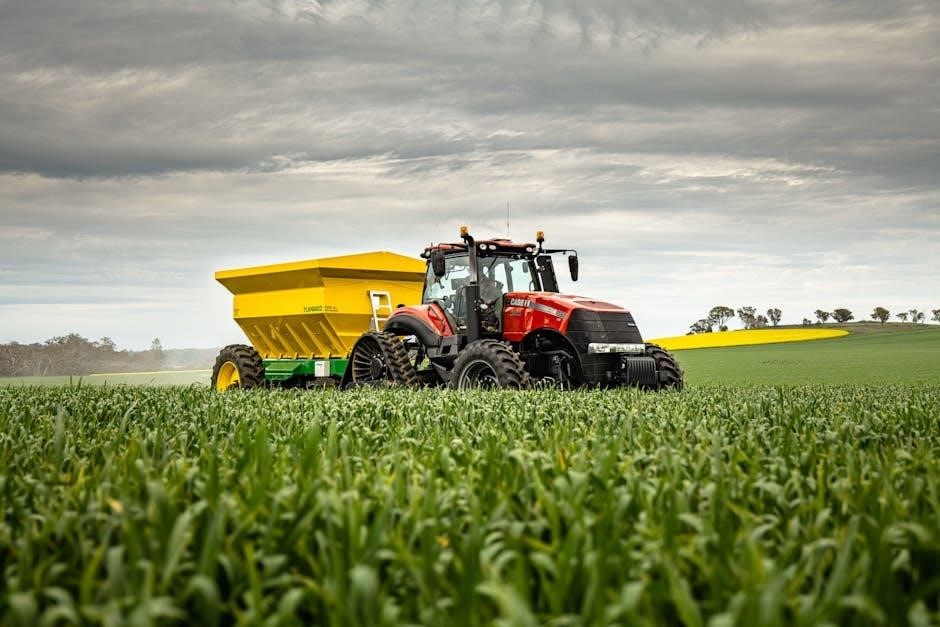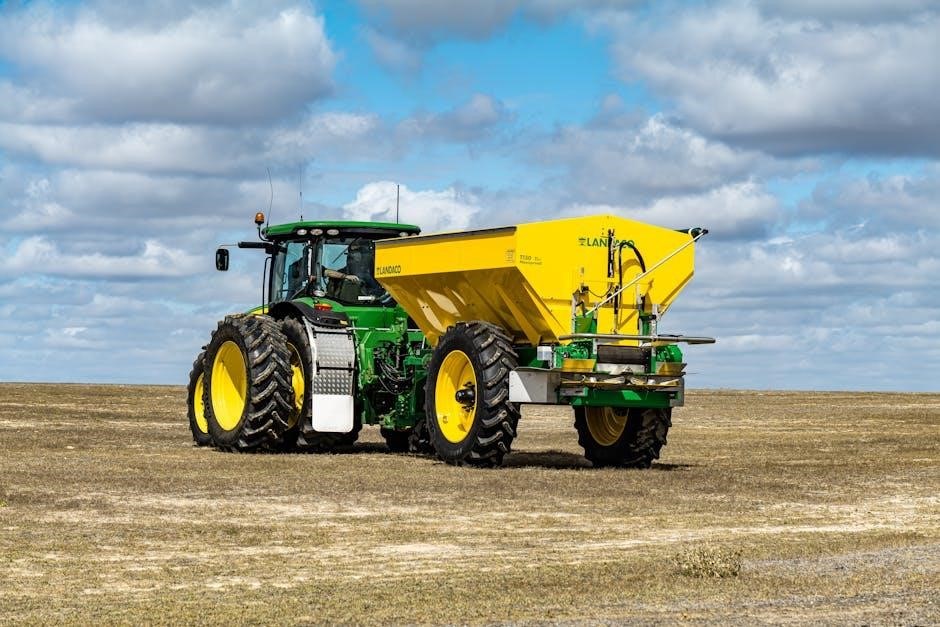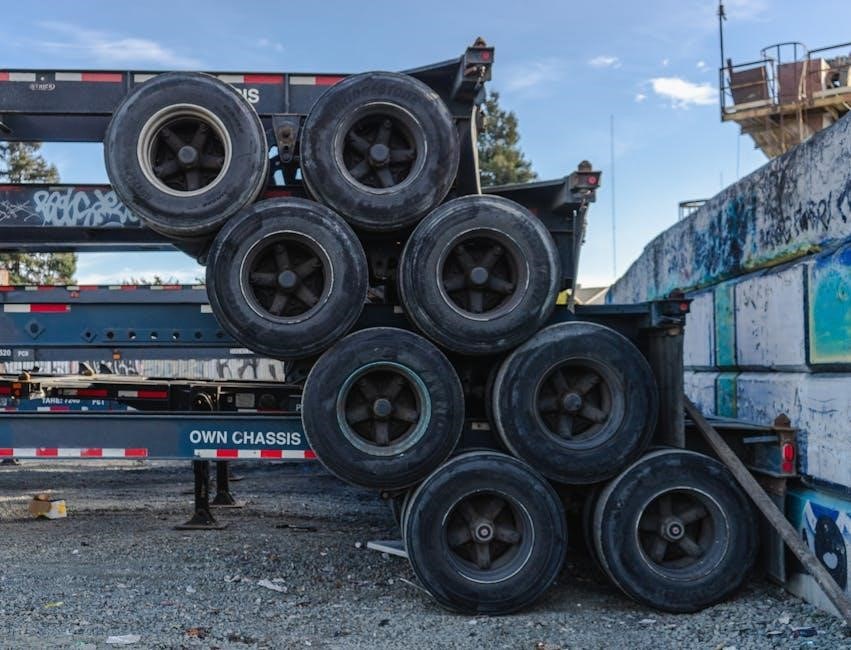Understanding Trailer Tire Size Codes
Trailer tire size codes are crucial for selecting the right tires. Codes like ST205/75R14 indicate diameter, width, construction type, load range, and speed rating. The sidewall also provides essential info, including DOT code, tread depth, and max pressure. Always match specs to your trailer’s needs for safety and performance.

Structure of a Tire Size Code
A trailer tire size code is a series of numbers and letters that provide critical information about the tire’s dimensions and capabilities. For example, in a code like ST205/75R14, each part has a specific meaning. The first letters (ST) indicate the service type, where ST stands for “Special Trailer.” Next, the three numbers (205) represent the section width in millimeters. The following two numbers (75) are the aspect ratio, showing the tire’s height as a percentage of its width. The letter R denotes the tire’s construction type (Radial in this case). The final number (14) is the rim diameter, which must match the trailer’s wheel size. Additionally, the sidewall may include load range, speed rating, and max load information. Understanding each part ensures proper fitment, safety, and performance for your trailer. Always verify these details with your trailer’s specifications to avoid mismatches.
Load Range and Speed Rating
The load range and speed rating are essential components of a trailer tire’s specifications. The load range, often denoted by a letter (e.g., D, E, F), indicates the tire’s load-carrying capacity. For example, a tire with a Load Range D is designed for medium-duty use, while a higher rating like F or G suits heavier loads. The speed rating, represented by a letter (e.g., M, N, P), signifies the maximum speed the tire can safely handle. For trailer tires, common speed ratings include M (up to 81 mph) and N (up to 87 mph). Always ensure the tire’s load range matches your trailer’s maximum load and the speed rating aligns with your typical towing speed. These ratings are critical for safety and performance, as underestimating load or exceeding speed limits can lead to tire failure. Proper selection ensures reliability and durability for your trailer tires.

Reading the Sidewall
Reading the sidewall of a trailer tire provides critical information for proper tire selection and maintenance. The sidewall contains the tire size code, load range, speed rating, and other specifications. For example, a tire marked ST205/75R14 D indicates a special trailer tire with a 205mm width, 75% aspect ratio, 14-inch rim diameter, and a load range of D. The speed rating, often denoted by a letter (e.g., M or N), shows the maximum safe speed. Additional markings include the Department of Transportation (DOT) code, tread depth, and maximum inflation pressure. Always ensure the tire’s specifications match your trailer’s requirements. Properly decoding the sidewall ensures safety, optimal performance, and compliance with load and speed limits. Regularly checking sidewall markings also helps identify wear or damage, such as cracks or uneven tread, which may require replacement. Accurate interpretation of sidewall information is essential for maintaining trailer safety and reliability on the road.

Factors to Consider When Choosing the Right Tire Size
When selecting trailer tires, consider the trailer type, load capacity, and wheel diameter. Ensure tires match the trailer’s weight rating and intended use. Proper sizing ensures safety, stability, and optimal performance. Always verify specifications.
Trailer Type and Usage
The type of trailer and its intended use significantly influence tire selection. Utility trailers, boat trailers, and RV trailers have different requirements based on their load and operating conditions. For instance, boat trailers often require tires with higher air pressure, typically between 50-65 PSI, to handle the weight and ensure stability during transit. On the other hand, utility trailers may need tires with a specific load range, such as Load Range D or higher, to accommodate heavy cargo. RV trailers, especially travel trailers, benefit from tires designed for long-distance towing, with features that enhance durability and heat resistance. The frequency of use also plays a role; occasional use may call for standard tires, while frequent or commercial use demands more robust options. Understanding the trailer’s purpose ensures the right tire choice for safety and performance. Always consult the manufacturer’s recommendations for specific applications to avoid under or over-tireing, which can lead to reduced efficiency and potential safety hazards.
Load Capacity Requirements
Load capacity is a critical factor in selecting the right trailer tires. The tires must support the total weight of the trailer, including its cargo and passengers, to ensure safe and efficient towing; Trailer tires are rated by their load-carrying capacity, often expressed as a Load Range (e.g., Load Range D, F, or G) or a Load Index. A higher load range indicates greater capacity, with Load Range G tires being suitable for heavy-duty applications. For example, a 7-10 Ton Lowboy Trailer typically requires 235/85R16 tires with an F load range, capable of handling heavy loads. It’s essential to match the tire’s load capacity to the Gross Trailer Weight (GTW) to prevent overload, which can lead to tire failure. Always calculate the total weight accurately, including the trailer, cargo, and any additional equipment. Underestimating the load capacity can compromise safety, while overestimating may result in unnecessary costs. Refer to tire size charts and load index ratings to ensure the correct match for your trailer’s needs. Proper load capacity ensures optimal performance and longevity of the tires.
Wheel Diameter
Wheel diameter plays a significant role in determining the appropriate trailer tire size. Common trailer wheel diameters range from 8 inches to 16 inches or larger, with 15-inch and 16-inch wheels being the most prevalent for utility and heavy-duty trailers. The diameter must match the tire’s specifications, as indicated in the size code (e.g., ST205/75R14 for a 14-inch wheel). Larger wheels, such as 16-inch or 22.5-inch, are typically used for heavy loads or commercial trailers, offering better stability and load-carrying capacity. Smaller diameters, like 8-12 inches, are suitable for lightweight trailers or utility carts. Always ensure the tire is compatible with the wheel size, as mismatched sizes can lead to poor performance or safety hazards. Tire size charts and load index ratings can help determine the correct fit. Proper alignment of wheel diameter and tire size ensures optimal handling and durability, making it essential to verify compatibility before installation.

Common Trailer Tire Sizes by Wheel Diameter
Common trailer tire sizes vary by wheel diameter, with 8-12 inches for small trailers, 13-15 inches for medium-duty, and 16-inch or larger for heavy-duty applications. Popular sizes include ST205/75R14, ST225/75R15, and 235/85R16.
8-12 Inch Wheels
Smaller trailers often use 8-12 inch wheels, ideal for lightweight applications. Common tire sizes include ST145/R12, ST155/R12, and ST175/80R13. These tires are designed for compact trailers, offering durability and stability for lighter loads. Always ensure the tire’s load capacity matches the trailer’s weight. Proper inflation is critical for performance and safety.
13-15 Inch Wheels
Tires for 13-15 inch wheels are popular for medium-duty trailers, offering a balance of durability and versatility. Common sizes include ST205/75R14, ST225/75R15, and ST175/80R13. These tires are ideal for utility trailers, boat trailers, and small RV trailers. They provide excellent load-carrying capacity and stability, making them suitable for both paved roads and light off-road use. Load ranges typically range from C to E, with speed ratings up to 75 mph. When selecting tires for 13-15 inch wheels, ensure the load capacity matches your trailer’s maximum load. Proper inflation is critical to maintain performance and safety. These tires are widely available and often recommended for applications requiring reliability and moderate load handling. Always check the sidewall for specific load and speed ratings to ensure compatibility with your trailer’s needs.
16 Inch and Larger Wheels
Tires for 16-inch and larger wheels are designed for heavy-duty applications, including large RVs, horse trailers, and construction equipment. Common sizes like 235/85R16, 255/70R16, and 285/70R17 are popular for their high load capacity and durability. These tires often feature load ranges F and G, catering to heavy payloads. Speed ratings typically range up to 99 mph (M), ensuring stability at higher speeds. The larger rim size provides better ground contact, improving traction and control. For 16-inch wheels, models like ST235/85R16 and LT235/85R16 are widely used, offering excellent performance for demanding conditions. Proper inflation is critical to avoid overheating and ensure even tread wear. Always match the tire size and load range to your trailer’s specifications for optimal safety and performance. These tires are ideal for long-haul towing and heavy-duty applications, delivering reliability and strength. Regular maintenance, including pressure checks and inspections, is essential to extend their lifespan.
